
Looking north toward Pomponio State Beach.
Friends don't let friends work in the office on a day like this! Zach initiated this glorious mid-week expedition to Pescadero State Beach. We spent the whole afternoon meandering along the coastline and investigating the fauna, flora, and geology. The day was further enhanced by a hike amongst the redwoods in Butano State Park, as well as lunch and dinner at Duarte's Tavern. When immersed in the urban grind of the Bay Area, it's too easy to forget places like Pescadero even exist...
Click on any picture for a full-size version.

|
|
Looking north toward Pomponio State Beach.
|
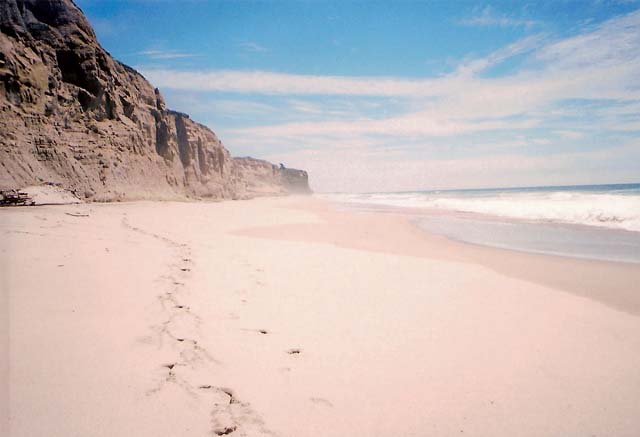
|
|
Looking south toward Pescadero Point.
|
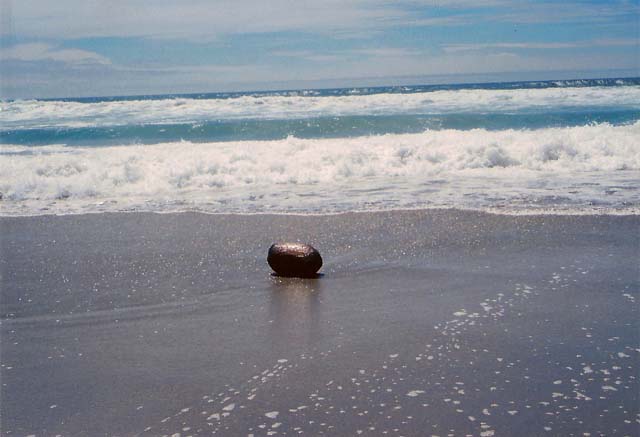
|
|
Look, a coconut! Well actually, it's a piece of driftwood doing a remarkably good impression of a coconut.
|
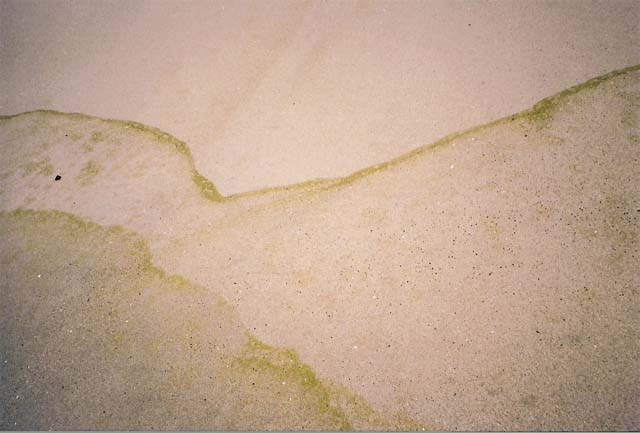
|
|
These traces of algae, left by the receding waves, reminded us of watercolor paintings of rolling green hills.
|
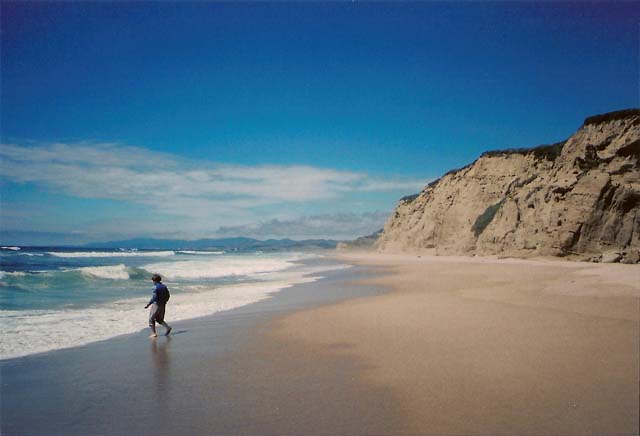
|
|
The water is always freezing, even in June!
|
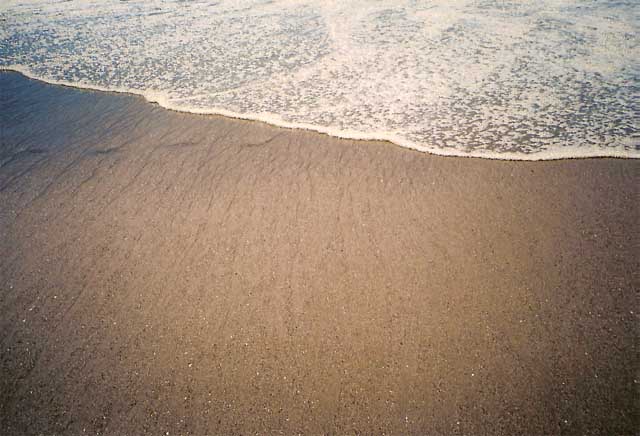
|
|
This is the 1,189,357,714,286th wave to hit the beach since its formation at the end of the last ice age.
|
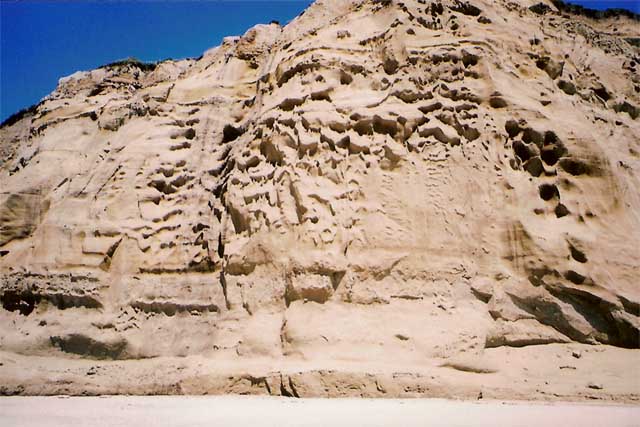
|
|
Some sections of the cliff had deep, well-formed holes. In one of the largest and deepest holes, we spied a raptor nest. But the raptors were nowhere in sight.
|
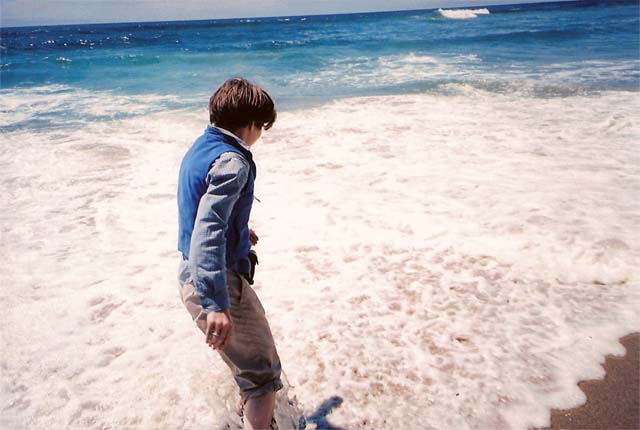
|
|
We found several skipping stones and tried them out. Mine skipped once.
|
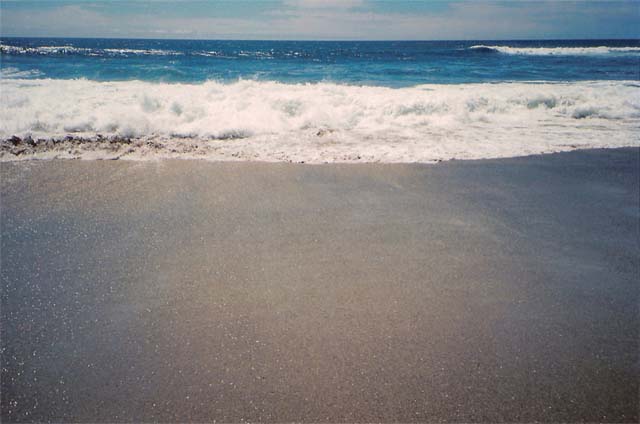
|
|
And there goes the 1,189,357,718,811th wave, never to be seen again.
|
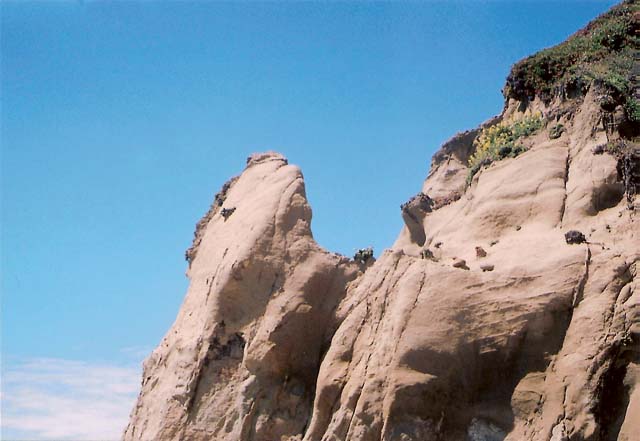
|
|
In one part of the cliff, hard iron-rich inclusions had formed caps that protected the soft sandstone from erosion, resulting in pillars such as this one.
|
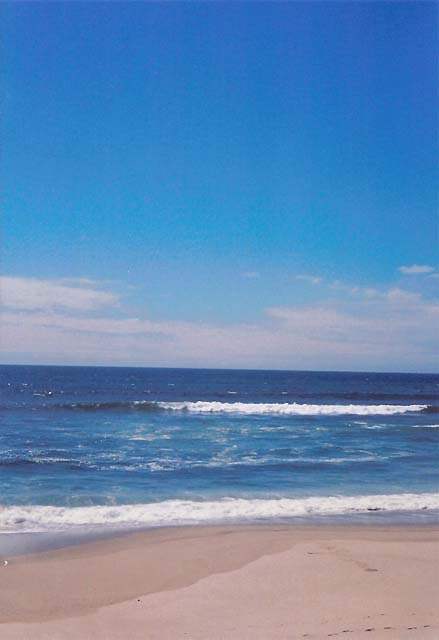
|
|
The sky was even more intensely blue than you see here.
|
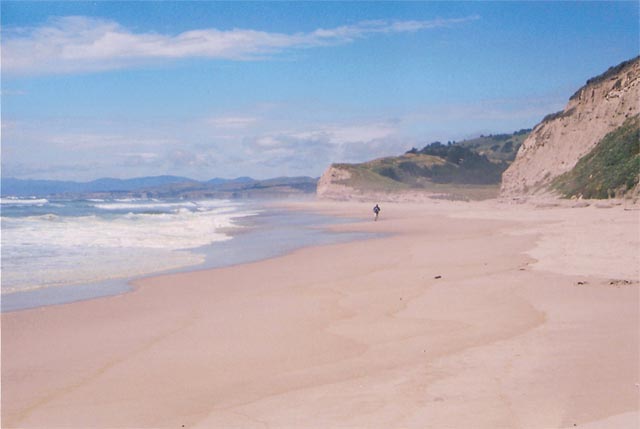
|
|
On our walk up the beach we saw many amphipods, some seagulls, and even an oystercatcher, but this was the only other Homo sapiens.
|
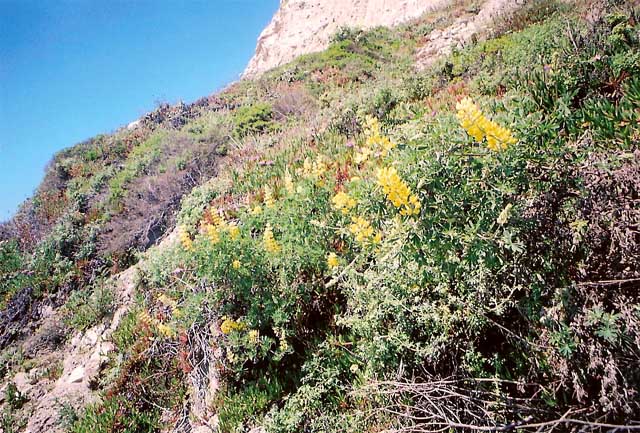
|
|
Flower "gardens" proliferated wherever water seeped out of the cliff. One of the common species was yellow bush lupine, Lupinus arboreus.
|
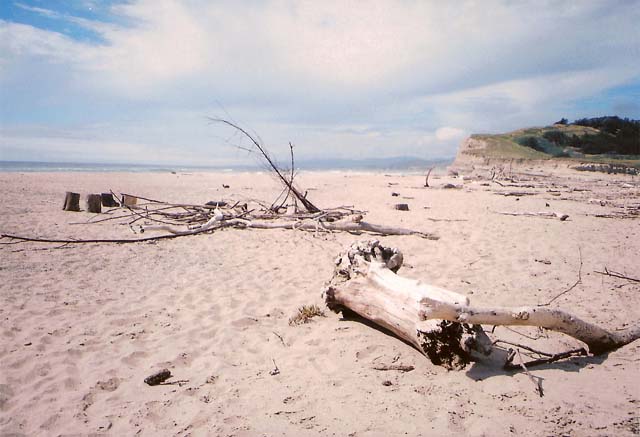
|
|
Near the entrance to Pomponio State Beach, driftwood logs have washed up around the mouth of the lagoon, and humans have arranged them into all sorts of structures.
|
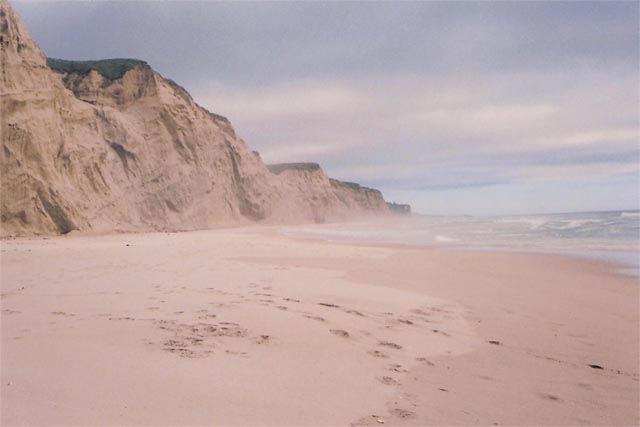
|
|
In what seemed like a matter of minutes, grey clouds rolled in from the Pacific and muted all the colors of the beach.
|
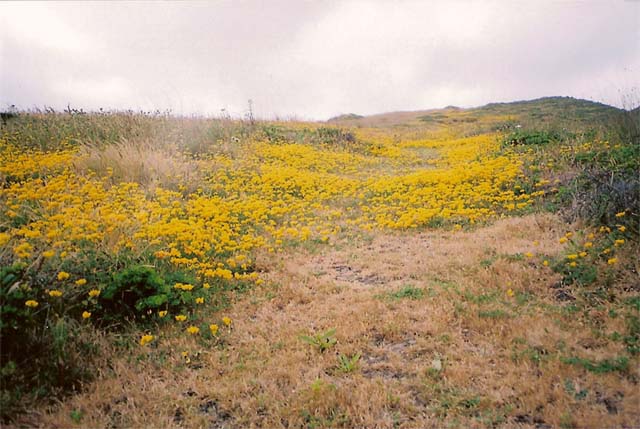
|
|
But no amount of cloud-cover could dull this golden Lotus (another intrepid N-fixer in the same family as the lupine).
|
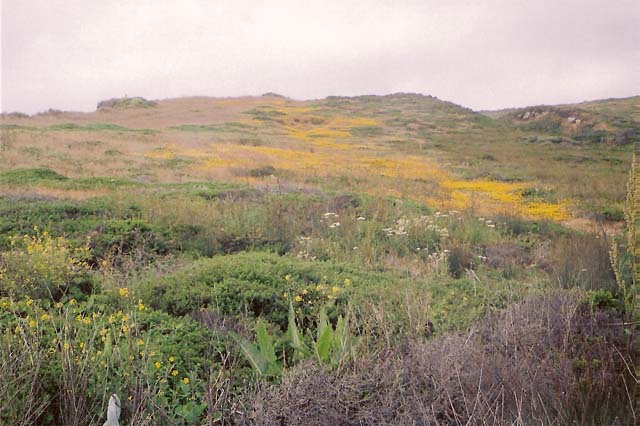
|
|
On this hillside we saw a rabbit darting amongst the bushes, and a great blue heron hunting for voles.
|
| |
|
Last updated June 22, 2006.